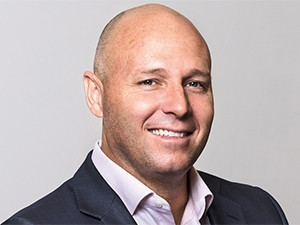
The consolidation of government departments and even parliaments hinted at by President Jacob Zuma in his State of the Nation address earlier this year would offer government IT decision-makers an ideal opportunity to leverage the always-on datacentre to improve government's service-delivery to citizens.
This is the view of Gregg Petersen of Veeam, who said "the journey starts with virtualisation".
"Should the consolidations of departments and parliaments happen, it would be a great time for government's IT-decision makers to look at the current availability of all their applications. And that would no doubt lead to better service delivery, not only to citizens but also to government employees trying to do their daily tasks."
He said virtual infrastructure could help government departments reduce their risks in terms of data migration, data loss and data uptime.
"Legacy technologies do not aid in the three main issues around data: migration, loss and uptime. Not only can parliament and government leverage this modern datacentre to deliver better services to citizens, but they can also go a step further to real-time monitoring to ensure risk mitigation."
He suggested that one or two data centre consolidation projects would start delivering immediate cost benefits too. "Centralising and consolidating is the way to go, but it is not just a technology decision. There are interdepartmental political issues that would need to be dealt with. But if the people can get together, then consolidation is the way to go to provide the uptime and risk mitigation necessary. And in the process these would be long term cost savings."
He based this view on recently released research by Veeam into the availability gap - the gap between what IT departments can deliver and what operational departments demand. The survey found that organisations with more than 500 employees lost on average around R1.4 million per hour of downtime.
In terms of compliance and governance concerns raised by government departments the world over as objections to virtualisation, Petersen said: "When organisations look to cloud solutions, they often see a security threat, but cloud is actually a way more secure platform. Why? Because cloud solutions can leverage best of breed technologies across multiple customers, in this case across multiple government departments."
Internationally, governments are relooking their IT infrastructure, he said.
"For example, US federal institutions are no strangers to tight budgets. Year after year, IT managers work hard to strengthen security and control, maintain strict data protection standards and system availability with smaller staffs and fewer resources. Through budget cuts, as well as the adoption of new technologies, federal agencies have saved substantial amounts of time and money, but they are experiencing exponential data growth of 30 to 50% each year. More end users require 24/7 access to data and applications. The right solution, one based on delivering always-on availability and recognised security, can save government departments millions while delivering the access their users - and ultimately citizens who demand service delivery - need," Petersen said.
He said many government-funded IT departments continue to rely on legacy backup solutions that result in unacceptable recovery time and recovery point objectives, lasting for hours and in some cases even days. Additionally, in many cases, more than 16% of their backups fail to even recover, and they struggle to have adequate visibility to detect these issues before they result in operational impact.
"If they consolidated into a virtualised solution, with the right software technology to ensure uptime and fast recovery, they would be able to deliver significantly more value to citizens," Petersen said.
"In the 1940s, it was acceptable to take two weeks by boat to reach London. In 2016, we take an 11-hour flight for granted. It is similar with data centres: they have to move fast. Recovery in 2016 should not take days and hours, but minutes and seconds - and the technology exists to make that possible."
To read more about virtualised data centres, download this white paper.
Share
Editorial contacts